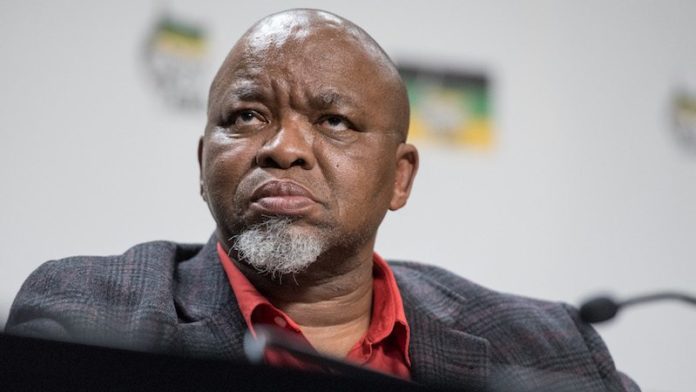
SOUTH African mines and energy minister, Gwede Mantashe, invited mining companies to submit plans to build power facilities, saying today his department [of Mineral Resources & Energy) would help “facilitate” the application process.
In terms of Schedule 2 of the Electricity and Registration Act (ERA), there is a proposal to increase embedded generation developments to 10MW without having to apply for a license from the National Energy Regulator of South Africa (Nersa).
However, the Minerals Council South Africa is pressing for an increase in the embedded generation ‘cap’ to 50MW from the 10MW as proposedl in the schedule. It had submitted an application for an amendment to Schedule 2 earlier this week.
Outgoing president of the Minerals Council, Mxolisi Mgojo, said at the organisation’s annual general meeting (AGM) on Wednesday that discussions on the “… need [for] the license cap to be raised to 50MW and the various regulatory time periods to be shortened … [were] progressing well”.
Mantashe, however, spoke as if he would brook no alternative to the DMRE remaining in control of the process. He urged mining companies at the AGM to “… visit us” so that his DMRE could help speed the application process through Nersa.
“If you have not started, we can discuss the plan, prepare for the plan [with] … Nersa so that you don’t get stopped,” he said. “If we facilitate, we can make it happen.”
Asked whether the issue of embedded generation was still a live debate, Minerals Council CEO Roger Baxter outlined the many fronts on which his organisation was lobbying.
For starters, the bureaucracy involved was identical regardless of whether an embedded generation application process was for 12MW or a new coal-fired power station. “That is the level of the regulatory process that you have to go through,” he said.
PAPER TRAIL
An environmental authorisation has to be sought at a national and a local level should, for instance, a fuel tank be attached to a solar plant. In addition, applicants have to get a ‘change of land use’ authorisation as well as demonstrate title to the land.
A company must then apply to Eskom for a grid-tie connection or point of source in order to be connected to the grid, a two-step process that takes 210 days before having to make an application to Nersa which can take another 90 days.
“So we are sitting in a remarkable situation where, for example, Gold Fields has got the Nersa approval for their 40MW, but it doesn’t have the grid-tie solution on the Eskom side,” said Baxter.
Gold Fields announced earlier this month it had been granted a licence to build a 40MW solar-powered plant at its South Deep mine west of Johannesburg. The plant would cost R660m to build, but the application has taken a year to process, so far.
Baxter said the council had been working with other associations, such as the Energy Intensive Users Group, in an effort to get these processes streamlined.
“At the moment, it is a bit of a voyage of discovery because any company that does something slightly different might have a completely different regulatory approach that is required,” said Baxter.
“There is a commitment by DMRE to help resolve these issues,” he said, adding that the council had met with Eskom CEO André De Rutyer who had appointed a senior general manager to tackle the streamlining of grid-tie applications.











